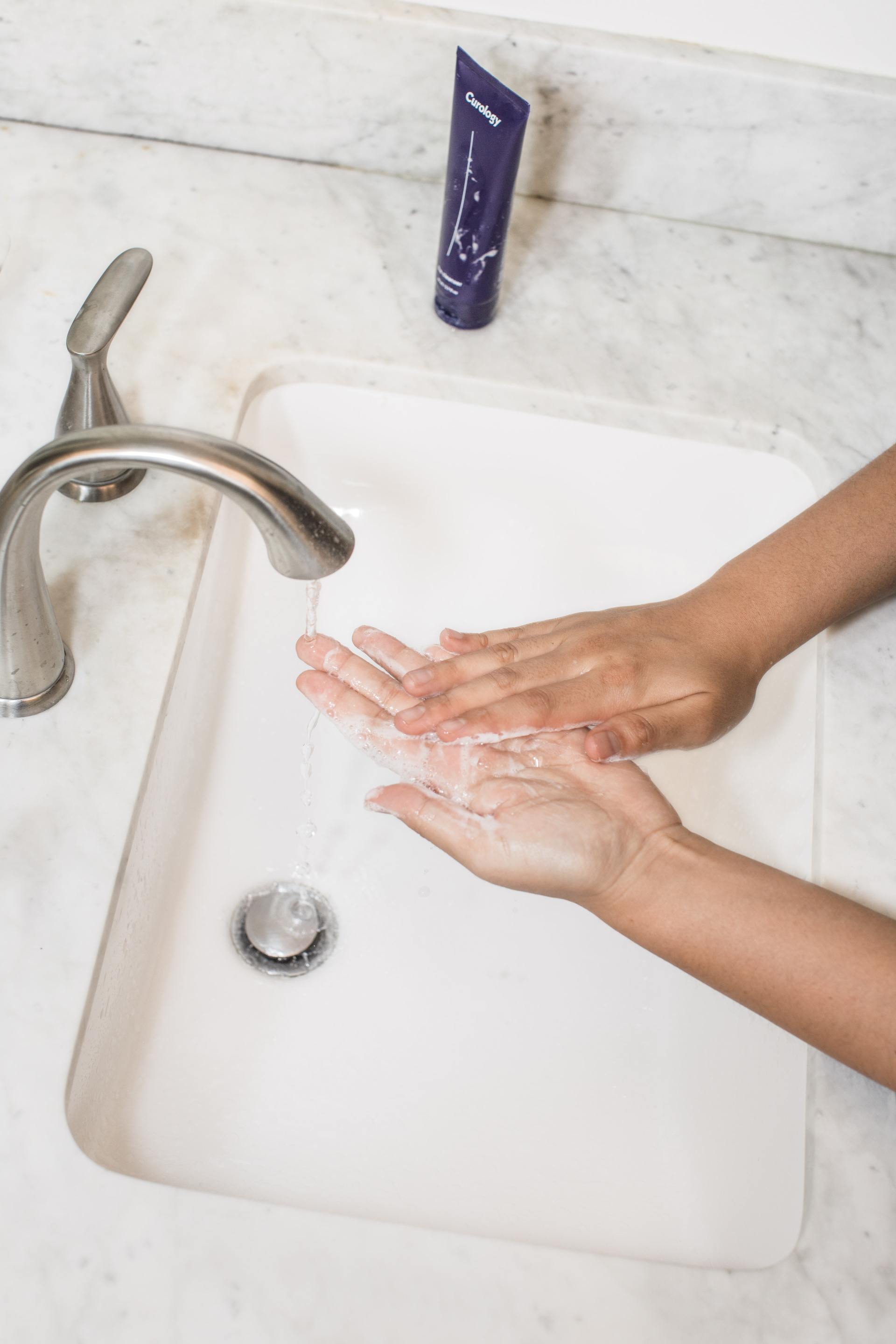Total Joint Replacement
Preparing for Total Joint Replacement
There are a number of steps that your surgical team must take in order to safely perform your surgery including reviewing lab work, talking to your insurance, and getting you prepared for a major orthopedic surgery. Please know that this process will take a good bit of time and effort by all of us, especially you. This is not something that should be rushed through. Following the pre-surgery timeline below will help keep you on track for your big day.
-
4-6 weeks before surgery day:
- You and the surgeon decide not only to do a joint replacement but that you are also healthy and motivated enough to do it in an outpatient setting where you go home the day of surgery.
- Fill out a PROMIS survey on an iPad in your surgeon’s office before surgery. You will be asked questions about your pre-surgery pain and functional status. We will ask you to fill out the surveys as you recover to track your outcomes.
- Get your OSC pre-op packet from the office staff or the care manager and complete forms ASAP. Please return complete forms to the surgeon’s office at least 3 weeks before surgery. Please bring signed originals with you on surgery morning.
- Pick out your COACH or COACHES that will be your main caregiver(s) before, during, and after surgery. This person must come with you to your required pre-op education class, help you get your home ready for you to recover, and be with you around the clock for at the least the first 7 days after surgery. Please have this COACH read your booklet before surgery so they know what to expect along with you! It’s perfectly fine to have more than one COACH if schedules won’t allow one, consistent person to help you.
- Schedule the required pre-op class with care manager. The class is designed to give you and your coach an introduction to the world of joint replacement and exactly how to prepare for surgery day. This class is mandatory for you and your coach.
- Schedule an appointment with your primary care physician to complete required tests and get cleared for surgery. We require this in order to make sure you are safe to undergo anesthesia. The clearance from your primary care physician is good for 30 days. This appointment and paperwork must be completed and back at the clinic no less than 3 weeks from your surgery date.
- Stop smoking and using tobacco products. This will help improve your healing after surgery. It will also help prevent infections in your surgical site.
*Failure to complete these steps may result in the cancellation of surgery*
-
2-4 weeks before surgery:
- Stop taking over the counter medications of any kind including vitamins, supplements, weight loss medications now.
- Attend the pre-op class with the care manager to get your surgery preparation instructions.
- Go to the appointment with your primary care physician for clearance and pre-op testing. Bring a copy of the test orders with you or they will not be able to complete the testing.
*Failure to complete these steps may result in the cancellation of surgery*
-
1 week before surgery:
- Stop taking any aspirin products and NSAIDS such as Advil, Motrin (ibuprofen), Aleve (naproxen), Mobic (meloxicam), Celebrex (celecoxib), Toradol (ketorolac), Indocin (indomethacin), Voltaren (diclofenac), etc.
- Fill and pick-up prescription medications to be started the night of surgery. These will include your pain medications and blood thinner. Do NOT take these prescriptions before surgery.
- Get your 2-wheeled rolling walker and bedside commode to use after surgery. You can purchase this online, at several durable medical equipment shops in and around Baton Rouge, or borrow from others. If you are borrowing equipment such as a walker, please make sure it is in good working order before surgery day (if it’s not, please purchase it ASAP).
- Make sure you have several large ice packs, gel packs, or bags of frozen peas to help ice your joint down often after surgery.
- Please buy the pre-surgery antiseptic wash, Hibiclens. It’s available at most major drugs stores. You may have to ask the pharmacist for it. It is also available online for less than $10. You need the 4 oz bottle which is enough for 2 showers before surgery. Please contact the care manager if you are having trouble getting your hands on this or if you don’t know how to use it.
*Failure to complete these steps may result in the cancellation of surgery*
-
Night Before surgery:
- Do NOT drink alcohol for at least 24 hours prior to surgery.
- Take 1st Hibiclens shower the night before surgery. Sleep on clean bed sheets and in clean pajamas.
- Do not eat anything at all after MIDNIGHT. No gum, mints, lozenges after midnight.
- Please drink clear fluids up until 2 hours before surgery arrival time. Options include Ensure Clear pre surgery drink, Powerade (1 liter), apple juice, black coffee with NO CREAMER. This will help prevent nausea and vomiting after surgery. The goal is to get about 50g of carbohydrates in 2 hours before surgery.
STOP DRINKING ALL FLUIDS 2 HOURS BEFORE SURGERY
*Failure to complete these steps may result in the cancellation of surgery*
-
Morning of surgery:
- Arrival time is 1.5 hours before scheduled surgery start time.
- Take 2nd Hibiclens shower. Put on clean, comfortable, loose-fit clothing to come to the surgical center.
- Check with care manager if any home medications should be taken surgery morning.
- Do not wear any perfumes, body lotion, or make up.
- Remove nail polish/acrylics from fingers and toes.
- Remove ALL jewelry/piercings and leave at home.
- STOP drinking clear fluids 2 hours before surgery.
- Bring your picture ID and insurance card with you the day of surgery. Also bring the completed forms from the pre-op packet.
- Glasses, contact lenses, hearing aids, dentures and other prosthetic devices will be removed and given to your coach to hold before you go in the OR. Bring appropriate holders for these items.
- Your coach must drive you to the surgical center and remain at the clinic the entire time that you are here for surgery. You may not rely on Uber or other public transportation.
*Failure to complete these steps may result in the cancellation of surgery*
Preventing Infection Before Surgery
We can’t stress the importance of preventing infection enough. There are several reasons why a joint replacement surgery may become infected like medical conditions (uncontrolled diabetes), lifestyle choices (smoking), and the germs all around you. To help combat the latter, we ask that you take showers with an antiseptic skin cleanser called chlorhexidine gluconate or CHG (known as Hibiclens over the counter).
-
Night Before Surgery Shower:
1. Wash your hair, face, genitals with any soap or shampoo that you wish and rinse completely.
2. Turn off the water but stay in the shower. Use half the bottle of soap with a fresh, clean washcloth or 2 and scrub gently from the neck down. Pay extra attention to the surgical site.
**Do NOT use surgical soap on face, hair, genitals! **
3. Let the soap sit on your skin for at least 3-5 minutes.
4. Turn water back on and rinse CHG soap away completely.
5. Dry off with a clean towel.
6. Do NOT put on any lotions, creams, powders, or perfumes on your skin after either shower as it cancels out the antibacterial effects.
7. Put on clean pajamas and sleep on clean bed linens.
-
Morning of Surgery Shower:
1. Wash your hair, face, genitals with any soap or shampoo that you wish and rinse completely.
2. Turn off the water but stay in the shower. Use half the bottle of soap with a fresh, clean washcloth or 2 and scrub gently from the neck down. Pay extra attention to the surgical site.
**Do NOT use surgical soap on face, hair, genitals! **
3. Let the soap sit on your skin for at least 3-5 minutes.
4. Turn water back on and rinse CHG soap away completely.
5. Dry off with a clean towel.
6. Do not put any lotions, creams, powders, or perfumes on your skin after either shower as it cancels out the antibacterial effects.
7. Put on clean, loose-fitting clothes and head to OSC.
- Please let your surgeon know if you develop any signs or symptoms of illness before surgery (i.e.-fever/chills, nausea, diarrhea, cough/sore throat/shortness of breath, cuts/scratches/bites near surgical site).
- Monitor the skin on your legs for cuts and scratches before surgery. Broken skin near a surgical site increases your chance of an infection.
- Do not shave your legs 72 hours before your procedure.
- Nothing prevents infection like a good handwashing routine!
What To Expect the Day of Surgery
-
Check in:
1.5 hours before scheduled surgery time.
When you arrive, you will check in at the arrival desk and present your identification along with the completed forms in your pre-op packet from the office. When the pre-op team is ready, you will be walked into a pre-op bay where a nurse will instruct you to clean your skin one more time and change into a surgical gown. They will also go over your medical/surgical history, daily medications and that you stopped all the correct ones before surgery. They will start an IV and give you a dose of pre-op antibiotics. You will see both your surgeon and anesthesiologist to go over your procedure. They will have you sign consents after your questions have been answered. You will also need to go to the bathroom before going into the OR.
-
Anesthesia:
Options for our Joint Replacement patients include general anesthesia (standard choice) or spinal anesthesia, with or without nerve blocks for total knee replacement. Your medical team will take many things into consideration when choosing what works best for you including your preference, medical history, and more.
- General anesthesia- Uses medicine that is administered by an anesthesiologist/ anesthetist through a mask or an IV. A tube will be placed in your throat to help you breathe. Once your surgery is complete, your anesthesiologist/ anesthetist will reverse the medication and be with you as you wake up, continually monitoring your vital signs.
- Spinal anesthesia- A thin needle is inserted in your back to inject medicine that causes temporary numbness below the waist. You will be given medication to relax you for this process. You will also receive medicines to make you feel drowsy and unaware of the surgery.
- Nerve blocks can be used for knee replacement surgery. Medicine is put around a nerve to help with pain relief after surgery. It is normal for the leg to feel heavy and numb after surgery, but the sensation will return over the next day or two.
-
Surgery:
Your surgery itself will last 1-2 hours.
It may be quite cool in the OR. There will be bright lights and lots of movement. Let us know if we can do something to make you more comfortable.
Your coach(es) must stay at OSC the entire time that you are in our care. This is not optional.
-
After Surgery:
Our goal is to have you walking within an hour of waking up in recovery. We will make sure your vital signs are stable. You will be given some pain medication and fluids to drink. When that is complete, it’s time for the physical therapist to help you get up and walk. On the way back to your recovery bay, we will ask you to go to the bathroom. Finally, you will get dressed and the nurse will give you discharge paperwork.
-
Criteria for Discharge:
- Vital signs stable
- Pain tolerable on oral medication
- PT session complete
- Able to tolerate oral fluids and food/crackers
- Mild to no nausea present
- Able to empty bladder
You will be discharged from the surgical center when you have completed all the above requirements. We do not have capabilities to keep you over night.
Recovering At Home After Total Joint Replacement:
-
Activity:
The most important exercise during recovery is simply getting up and walking around every hour. This helps keep your joints from getting stiff and painful. It also helps promote blood circulation to prevent clots.
Your walking goal after surgery is “5 minutes out of every hour”. Walking long distances and then sitting for several hours isn’t helpful and can even be dangerous. It can lead to lower leg swelling, bleeding and bruising at your incision and blood clots.
A simple walk to the bathroom or to grab some water and a snack in the kitchen is all it takes. Then take a seat, get those feet elevated, put ice on your incision.
Your second exercise would be ankle pumps. At least 10 times an hour, to flex your foot and pull your toes back toward your nose. Then point your toes downward, away from your nose and hold for a second or two. You should feel your calf muscle tighten when you point your toes downward. This keeps muscles loose and blood circulating in your lower leg.
You can attempt some of the exercises in the patient guide you were given but the focus is really on preventing swelling and stress on the incision.
-
Diet:
Eat light meals to make sure you don’t get upset stomach. Advance diet as tolerated. Make sure you are drinking plenty of fluids.
-
Bandage:
Keep your bandage clean and dry. You can put ice on top of the bandage as long as it doesn’t get the bandage wet.
Once the bandage comes off, you can take a shower but be careful not to soak the incision.
Do not remove the clear mesh that is glued directly to your skin at the incision site! This is holding your incision closed. It will be removed at your follow up appointment. If it loosens along the incision line or comes off, please call the surgeon or care manager immediately.
-
Preventing Blood Clots:
Though very rare, blood clots are a concern after total joint replacement. You will be prescribed a medication to begin AFTER surgery. Please make sure that you are aware of the name of that medication and how long to take it. Follow your activity guidelines to promote circulation in your legs.
Signs of a blood clot include:
-pain in the lower leg/calf that is not related to the incision
-new or extreme tenderness, redness, swelling of the leg
-shortness of breath
-chest pain especially when you take a deep breath in
PLEASE CALL YOUR SURGEON OR CARE MANAGER IMMEDIATELY IF YOU EXPERIENCE THESE SIGNS!
-
Constipation:
Surgical anesthesia, pain medications, and inactivity can all contribute to constipation. It is recommended that you purchase an over-the-counter stool softener/laxative like Senokot-S and take as directed until bowel habits are back to normal. Drink plenty of fluids (besides soda, coffee, and alcohol) and increase the amount of fiber in your diet with fruits, vegetables, and whole grains.
-
Medications:
The medications we prescribe work better when taken before you are in severe pain. Staying on a schedule with your medications usually results in less pain and a quicker return to activity. Take your medications with food to prevent upset stomach. Note that we can’t refill prescriptions after hours, over weekends, and on holidays.
WHEN TO CALL YOUR SURGEON OR CARE MANAGER
Any time you have a question or concern is a good time to call us. But we especially need to know the following:
- A fall, even if you think you’re ok
- Uncontrollable pain: It is normal to experience a deep ache through the bone or a burning sensation
- Change in color of arm, hand, fingers, leg, foot, toes
- Numbness, tingling, burning that persists even after ice application, elevating, changing position, or moving
- Bleeding or drainage from incision site
- Excessive, persistent swelling that hasn’t gone down with cold therapy and elevating the leg
- Increased redness around incision
- Temperature more than 101.5 degrees
- Inability to walk, do exercises
We do have a walk-in clinic at our Baton Rouge location on Saturdays. If you have an issue that needs to be checked out, we will have someone available to see you!
CONTACT
225-763-6011info@oscbr.com7301 Hennessey Blvd. Ste. 100 Baton Rouge, LA 70808
All Rights Reserved | OSCBR








